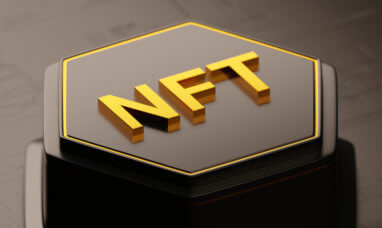There is nothing like a hands-on learning experience, so consider practicing your stock investing skills with simulated paper trading, otherwise known as a stock market simulator.
Buying and selling stocks can be expensive and sometimes risky. Getting hands-on experience with stock investing is valuable, but it’s not wise to be reckless with your money. Fortunately, there is a way you can get familiar with the stock market without risking your money.
Paper trading is a very old practice for stock investors to try out new ideas and get a feel for the markets without risking a dime. This approach is valuable for investors at any level, and it’s worthwhile for anyone who wants to invest and make a profit in the stock market.
Stock investing is a high-performance activity, where experience and knowledge are necessary to succeed in the markets. Think about it this way. Would you compete in a basketball game or perform at a concert without practicing? The same idea applies to stock investing.
Active stock trading requires a lot of practice and time with charts. Less active investing still requires familiarity with the stock market and the testing of ideas. Paper trading fulfills this role. Let’s explore how it works and how you can set up your own paper trading account and start practicing today.
What is Paper Trading?
In the early days of the stock market, an investor could write down prices in a small book or some scratch paper. With some simple math, they could write down a theoretical trade with an imaginary amount of money and see how it would perform in real-time.
This came to be known as paper trading, and it’s a practice that persists today in the world of electronic trading. A paper trading account will allow you to automatically place theoretical trades, and trading software will track the hypothetical value of your investment.
You can set up a paper trading account with any amount of imaginary funds, reset it whenever you like, and buy and sell any instruments that you want. This allows you to test out new ideas, get familiar with the investing process, and analyze how your investments would play out.
Why Trade With a Paper Account?
There are several reasons why any investor should use a paper trading account.
Practice and Education
The first and most obvious reason is to practice your skills with the stock market and educate yourself on the basic principles of stock investing. You can buy and sell stocks as well as derivatives like futures and options contracts without incurring losses.
You will find that there is often a major difference between the theories and ideas of stock investing versus the actual practice of stock investing. Paper trading gives you the chance to take the basic concepts of stock investing that you’ve learned and put them to the test.
Make Mistakes and Learn
The best part about paper trading is that there is unlimited room for mistakes. You can always reset your account balance if something goes wrong, so there’s no need to worry about making big mistakes. In fact, it’s good to make mistakes and learn through practice.
The theoretical side of stock investing does not include a hands-on education. You need to understand what it’s actually like to participate in the stock market in order to succeed. Paper trading gives you all the benefits of participation without any of the risks of real money.
Try Out New Ideas
Even if you are a seasoned and experienced stock investor, you can still benefit from paper trading. Say you have a new idea about a stock, you want to try out a new approach to investing, or you’d like to try buying and selling a new type of financial derivative.
Paper trading gives you the opportunity to do these things and see how it pans out without the stress and financial risk of using your money. You can keep using paper trading while holding real positions in order to expand your horizons and watch more potential positions at once.
Successful stock investing is all about ideas. Having a good idea about a stock, whether or not it is a typical or standard approach, is what you need to make a profit. For example, a paper trading account could be used to take positions on companies as they release earning reports and analyze how you can profit from which types of reports.
Discipline Yourself
Stock investing can be very stressful. There is a potential to gain or lose a lot of money at a time, and this has a powerful psychological effect on the person investing. The natural impulses of investing lead to losses and smaller profits, successful investors have to train their minds in order to resist their impulses and make careful decisions.
In other words, cooler heads prevail. Paper trading will let you experience what it feels like to buy and sell stocks without risking your money. Even though money is theoretical, it gives you an idea of the psychological pressures of taking risks in the financial market.
The most common mistake people make in stock investing is to let losses run and take profits early. The wisest decision is to cut your losses early and let profits run, but your natural mental impulses will pressure you to do the opposite. The same idea even applies to personal finance.
Mental discipline is absolutely crucial to successful stock investing. Even the greatest trading ideas and most advanced approaches to the stock market are useless without the mental discipline to follow through. Paper trading helps you build this discipline.
How Do I Start Paper Trading?
It’s very easy to get started with paper trading, and there are two main approaches.
Manual Paper Trading
This is the traditional method of paper trading, but it isn’t always the most convenient. Manually paper trading involves writing down your potential trades on a piece of paper or digital document and tracking the market to see how it performs.
For example, say you want to simulate buying 100 shares of company X and it’s currently listed at $20 per share. You would simply write down something like this:
BUY 100 X $20 for $2,000
Say company X increases to $30 per share a month later and slows down after a severe bull run. You’d like to sell your paper shares and write down something like this:
SELL 100 X $30 for $3,000
Then you could calculate your profits and loss (PnL) like this:
PnL: +$1,000 (+50%)
Total Balance: $3,000
This is the old-school method of paper trading. It’s still useful and very easy to start doing, but modern technology has made things much easier.
Retail Paper Trading
Many retail brokers offer paper trading accounts and plenty of educational material to learn about the stock market. These accounts allow you to electronically simulate any amount of money you’d like and place any sort of trades.
This is more convenient than traditional paper trading as the system automatically calculates your open positions, total PnL, commissions, and transactions with complex derivatives.
There is a lot more you can do with an electronic paper trading account, but it does require first registering with a retail broker and potentially downloading some investing software.
Whichever method you choose, you now understand the basics of paper trading and are ready to get started and practice making profits!
Featured Image: Twenty20








